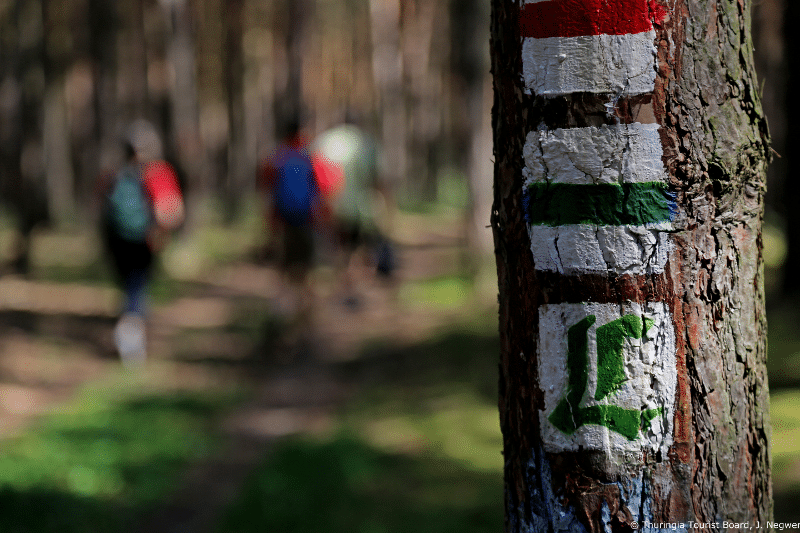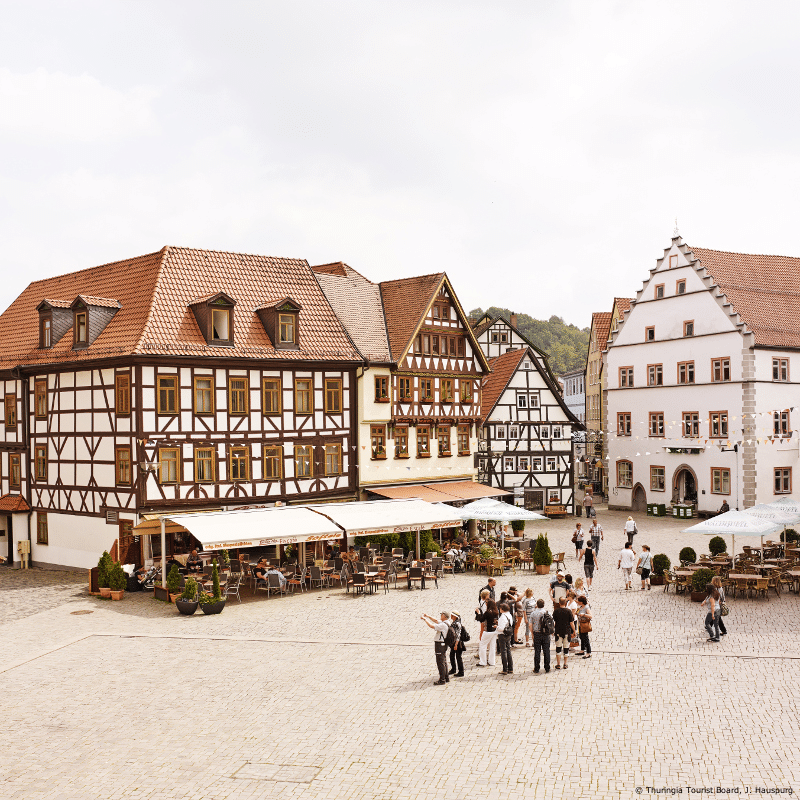
Martin Luther, the great religious reformer who lived from 1483 to 1546, is one of the most famous figures in German history. In 1517, Luther—a Catholic priest and theologian—publically challenged the teachings and practices of the Roman Catholic Church, setting in motion a chain of events that came to be known as the Protestant Reformation. In 2017, several cities in Germany will commemorate the 500th anniversary of that important event, with dozens of special activities honoring Martin Luther and his influence not only on religion but also on music, art, literature, and the German language itself.
Luther’s life reads like a scenario for a historical action-adventure film: Boy grows up in a middle-class German family, gets a good education, starts to study law at university, then suddenly drops out to become a monk—after nearly being struck by a bolt of lightning during a thunderstorm. He’s ordained a Catholic priest and becomes a respected professor of theology, then develops views on Christianity that set him on a collision course with the pope in Rome. Luther is excommunicated from the Catholic Church, branded a heretic, escapes capture (and probable death), and hides undercover in a castle-fortress, under the protection of a wealthy nobleman. And that’s just part of the story. Anyone wanting to follow in the footsteps of Martin Luther can visit many of the most important places associated with his life in the German federal state of Thuringia, located in the heart of the country.
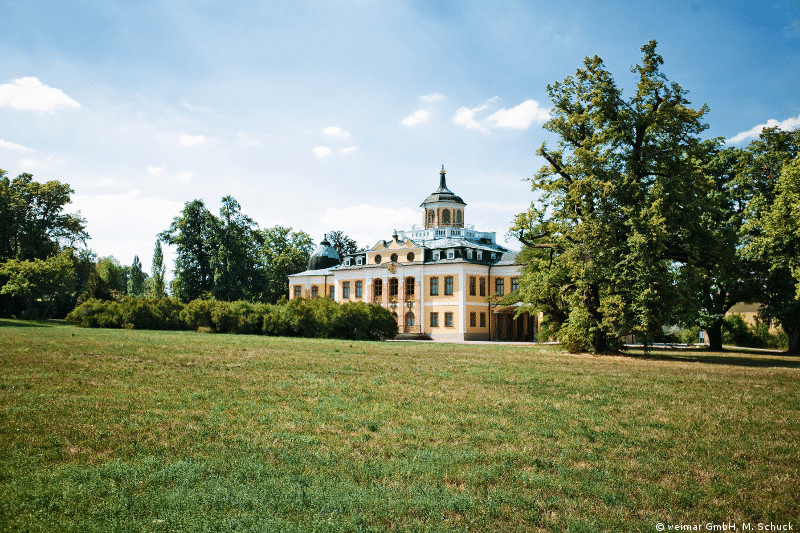
Following the chronology of Luther’s life would lead you back and forth many times across this area—albeit on today’s high-speed Autobahns and well-paved country lanes instead of by horse or on foot along the rutted roads of Luther’s time. A better approach for today’s traveler is to follow the Luther Trail in Thuringia, along a more than 1000-kilometer route (over 621 miles) through this picturesque part of Germany, connecting more than 30 locations associated with Luther’s life and the Reformation. The trail includes hiking and biking routes, as well as places easily accessible by car or train, and all have signboards or plaques explaining the significance of the Luther sites along the route.
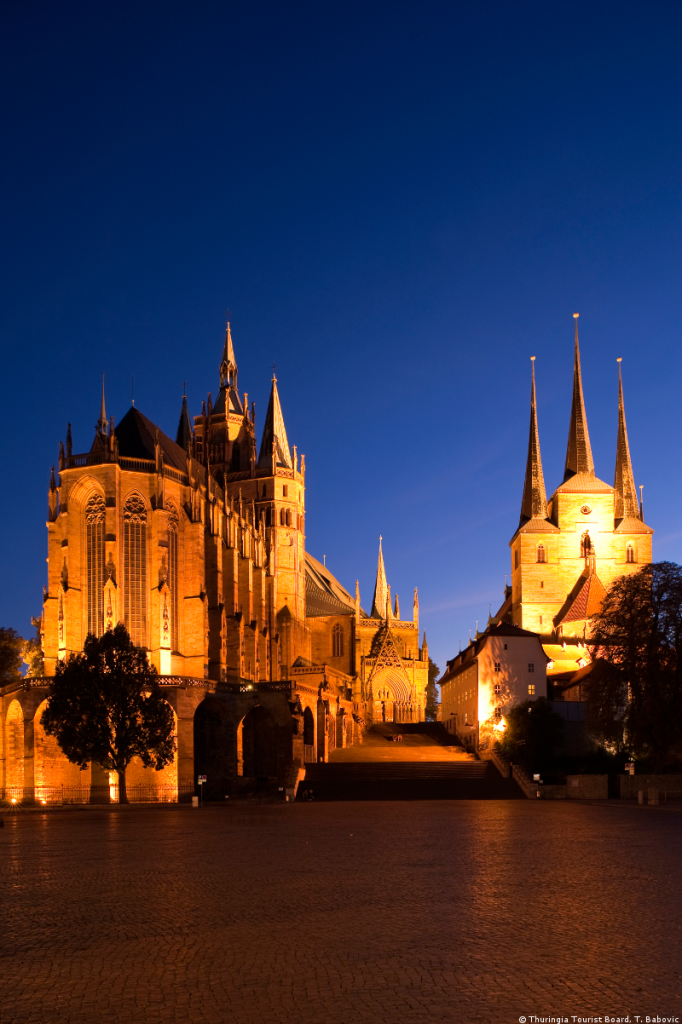
Start in Luther City, Erfurt, the capital of Thuringia and the largest city in this region. Luther entered the university at Erfurt in 1501, earned a master’s degree, and went on to enroll at the university’s law school in 1505. But that summer, on his way back to Erfurt from visiting his parents, he was nearly struck by a bolt of lightning during a sudden thunderstorm on the road in nearby Stotternheim. And that experience changed the course of his life. Fifteen days later, he entered the Augustinian monastery in Erfurt, determined to become a monk.
An engraved stone near Stotternheim, just outside of Erfurt, marks the spot of that dramatic incident. In Erfurt itself, you can visit the Georgenburse, the student quarters where Luther lived when he was in the university, and the Augustinian monastery where he later took his religious vows. A permanent exhibition at the monastery includes the monk’s cells, a historical library, and several artifacts from Luther’s time. You can even stay at the monastery yourself, in rooms that now have lodging standards. Also see the adjacent St. Augustine Church, with its beautiful stained-glass windows dating from the 1300s, and St. Mary’s Cathedral on the Domplatz (the city’s central square) where Luther was ordained a Catholic priest in 1507. The spires of St. Mary’s and the neighboring Church of St. Severi dominate the skyline of Erfurt, which was once called the “Thuringian Rome” because of its many churches and chapels.
Legend says that in 1517 Luther nailed to a church door his “Ninety-Five Theses” criticizing certain doctrines and practices of the Roman Catholic Church—the spark that set off the Protestant Reformation. After unsuccessfully trying to defend his beliefs before church councils in Germany, Luther was excommunicated from the Catholic Church in 1521, and his life was in danger. But by then, his writings had already been circulated widely in Europe, and religious revolution was in the air. The City Museum of Erfurt has an interesting permanent exhibition, “Amazing Years: Rebellion, Reformation, Revolution,” that focuses on the social, political, and religious impact of the Protestant Reformation and its influence on the course of modern history.
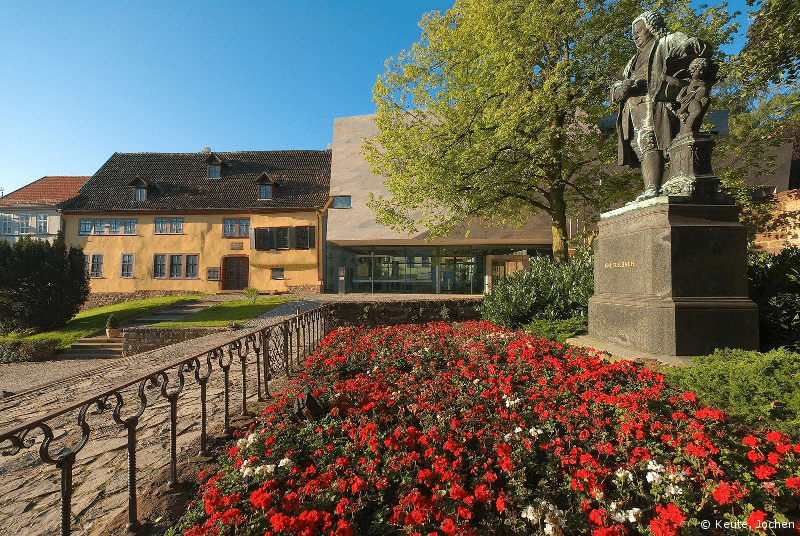
The Thuringian town of Eisenach is another important Luther City. When Luther was still a teenager, his family sent him to Eisenach to study at St. George’s Latin School, where he also became a choir boy at St. George’s Church. The pretty half-timbered house where Luther boarded with the Cotta family during that time, from 1498 to 1501, is known today as the Luther House. It’s now a brand new museum featuring exhibits about those formative years of his life and about the history of the religious Reformation.
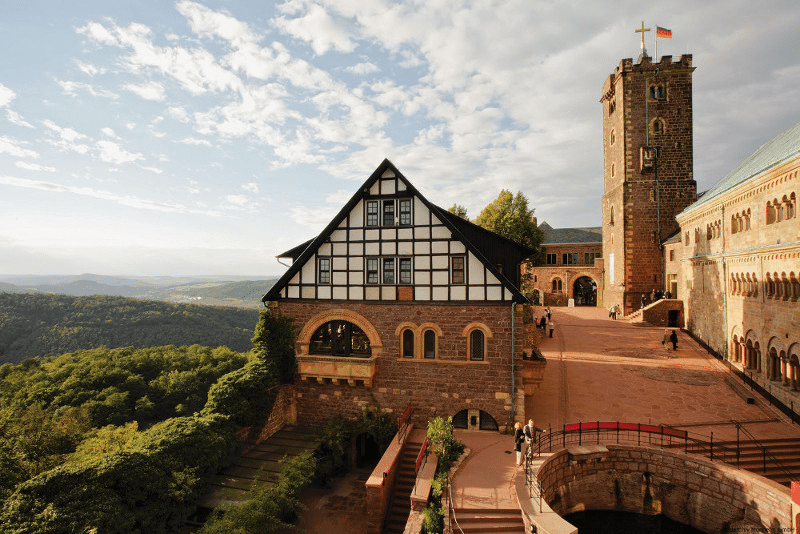
Today thousands of people from all over the world travel to Eisenach to visit Wartburg Castle, now an impressive UNESCO World Heritage Site overlooking the town. Luther found refuge in that mighty fortress from 1521 to 1522, hiding under the assumed name Squire George to avoid arrest and trial as a heretic after his public challenge to the powerful Catholic Church. During his stay, he translated the New Testament from Greek into German in 10 weeks time, a translation that made the scriptures accessible to ordinary people and ultimately had a lasting impact on the German language and German culture. At Wartburg Castle, you can still see the simple room where Luther stayed and worked on that important document. The castle’s national special exhibition 2017, about “Luther and the Germans,” focuses on the cultural, intellectual, and political effects of his doctrines, presented through displays of more than 300 paintings, prints, books, sculptures, and historical objects from everyday life.
Several other places in Thuringia are also associated with Luther’s life. Along the Luther Trail you can visit Möhra, where Luther’s parents lived until shortly before he was born (and where many descendants of the Luther family still live today). Nearby Schmalkalden is where the Schmalkaldic League was formed in 1531, an alliance of Protestant princes and territories to defend against the religious policies of the Catholic Emperor Charles V. The imperial city of Mühlhausen is also worth a visit, as it was a center of the so-called radical reformation and has one of the largest medieval city centers in Germany.
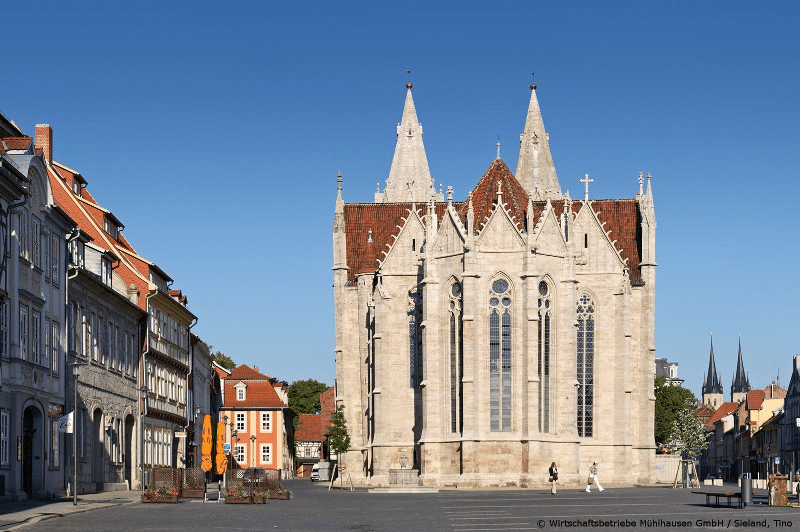
And between 1518 and 1540, Luther was also a regular visitor to the city of Weimar, which today features many UNESCO World Heritage Sites. See the town’s Church of Sts. Peter and Paul with the famous Cranach Altarpiece by Lucas Cranach the Younger and the Elder. Luther preached there several times and one of his original Bibles is part of the stunning historical Anna Amalia Library.
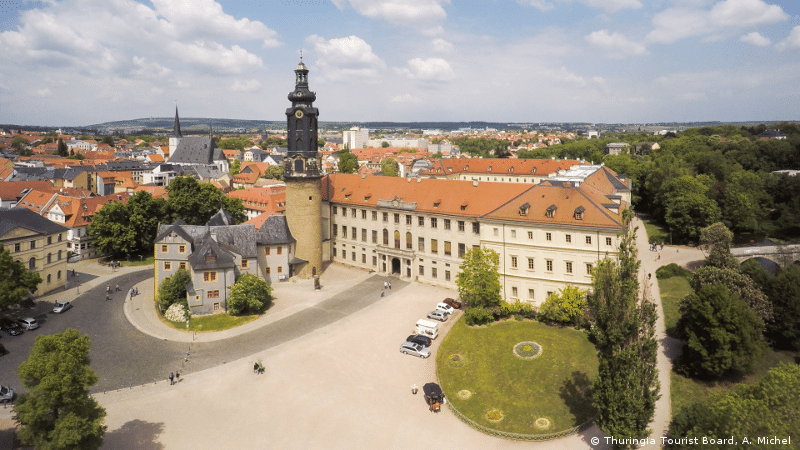
Luther was also well known for his love of food and beer. On one of his visits to Weimar he wrote to his wife: “I am doing well here. I eat like a Bohemian and drink like a German, thanks be to God for this.” No doubt there was music at those meals in Weimar, too. All his life Luther was a lover of music. In addition to being a prolific composer, he was an accomplished singer who also played the flute and the lute.
Many other Luther sites line the Luther Trail in Thuringia, from memorial statues to churches, cloisters, and other places important in Reformation history. And many of them are planning special events in 2017 to commemorate the 500th anniversary of the birth of the Protestant Reformation. Traveling to these historical Luther sites in Thuringia will take you back to a time, five centuries ago, that still has a lasting influence on our modern world today.
[alert type=blue]
To find out more about the Martin Luther sights, museums and exhibits in Thuringia, Germany
For more information about the Luther Trail
www.visit-thuringia.com
[/alert]
[alert type=white]
Where to Stay:
Erfurt
Hotel Zum Norde – Set in a restored 19th-century townhouse, this refined hotel is an 8-minute walk from Erfurt train station and an 11-minute walk from Erfurt Cathedral. Weitergasse 26, Erfurt; +49 361 56800; www.hotel-zumnorde.de
Best Western Hotel Excelsior – This modern hotel in an elegant Art Nouveau building is 1.2 km from the Erfurt Cathedral and 1.9 km from the Baroque-era Zitadelle Petersberg fortress. Bahnhofstraße 35, Erfurt; +49 361-56700; info@excelsior.bestwestern.de
Radisson Blu – Set in downtown Erfurt, this contemporary hotel is a 15-minute walk from Erfurt Cathedral. Juri-Gagarin-Ring 127,Erfurt; +49 361 55100; https://www.radissonblu.com/en/hotel-erfurt
Eisenach
Romantik Hotel auf der Wartburg – Adjacent to the hilltop Wartburg castle, this elegant circa-1914 boutique hotel is 3.1 km from the Bach House museum and 3.9 km from downtown Eisenach. Auf der Wartburg 2, Eisenach; +49 3691 7970 ; www.wartburghotel.de/en/
Steigenberger Hotel Thüringer Hof – This formal, upscale hotel with a neoclassical facade is an 8-minute walk from both the Eisenach train station and the Bach House museum. Karlspl. 11, Eisenach; +49 3691 280; www.steinberger.com
Hotel Glockenhof – A 4-minute walk from the Bach House museum, this modern hotel set in a 19th-century property is also 2 km from the Wartburg Castle museum. Grimmelgasse 4, Eisenach; +49 3691 2340; www.glockenhof.de
Weimar
Hotel Elephant – Overlooking the town center’s market square, this refined hotel dates to 1696. It’s a 3-minute walk from the Goethe National Museum and a 4-minute walk from the Bauhaus Museum. Markt 19, Weimar; +49 3643 8020;
Dorint Hotel am Goethepark – This modern city center hotel in a converted Neoclassical building is a 7-minute walk from the Bauhaus Museum. Beethovenpl. 1-2, Weimar; +49 3643 8720
Best Western Premier Grand Hotel Russischer Hof – This palatial hotel with 19th-century decor is a 3-minute walk from the German National Theatre and 7 minutes by foot from Goethe House museum. Goethepl. 2, Weimar; +49 3643 7740
Where to Eat:
Martin Luther is quoted as saying, “I eat like a Bohemian and drink like a German, thanks be to God for this.” The hearty food of this region is still popular today, and several restaurants feature dishes dating from Luther’s time.
Erfurt
Luther-keller – Enjoy a medieval-style meal, with live music and costumed waitresses, in the atmospheric vaulted cellar. Futterstraße 15/16, Erfurt; +49 361 568 8205; www.lutherkeller.de
Köstritzer zum Güldenen Rade – Enjoy the famous Thuringian potato dumplings or have a locally brewed Köstritzer Schwarzbier at the restaurant or relax in the beer garden. Marktstraße 50, Erfurt; +49 361 561 3506; www.zum-gueldenen-rade.de
Goldhelm Manufacturer – Located right on the historical Merchants’ bridge in the heart of Erfurt, have a “Brückentrüffel” or a hand-made ice-cream here. Kramerbrucke Bridge 15, Erfurt; +49 361 660 9851; www.goldhelm-schokolade.de
Eisenach
Hotel Eisenacher Hof – The “Lutherstuben” serves a special “Lutherschmaus” (Luther feast) in a candlelit, medieval-style dining room, featuring the kinds of food, drink, and entertainment popular in the late Middle Ages. Katharinenstraße 11-13, Eisenach; +49 369 129 390; www.lutherstuben.de/home.html
Romantik Hotel auf der Wartburg – The restaurant “Gasthaus für fröhliche Leut’“ here in the hotel offers very good local cuisine and fabulous views overlooking the Thuringian Forest. Auf der Wartburg 2, Eisenach; +49 3691 7970 ; www.wartburghotel.de/en/
Café Zucker+Zimt – Located in Eisenach’s market square, the café features light, small home-made dishes, cheese, chocolates and even ice cream that is locally produced. Market 2, Eisenach; www.zucker-zimt-eisenach.de
Weimar
Gasthaus zum weißen Schwan – Have a good Thuringian meal here at this traditional restaurant next to the Goethe National Museum. Frauentorstraße 23, Weimar; +49 364 390 8751; www.weisserschwan.de
Frauentor – This café and restaurant is famous for its home-made tarts and cakes and is located right in the heart of town. Schillerstraße 2,Weimar; +49 364 351 1322; www.cafe-frauentor.de/de/
Restaurant joHanns Hof – This fine restaurant with its romantic Terrasse and Biergarten is located in the historic district. It’s famous for serving fine local wine that matches the creative cuisine from the region, especially seasonal dishes. Scherfgasse 1, Weimar; +49 364 349 3617; www.restaurant-weimar.com/
[/alert]

